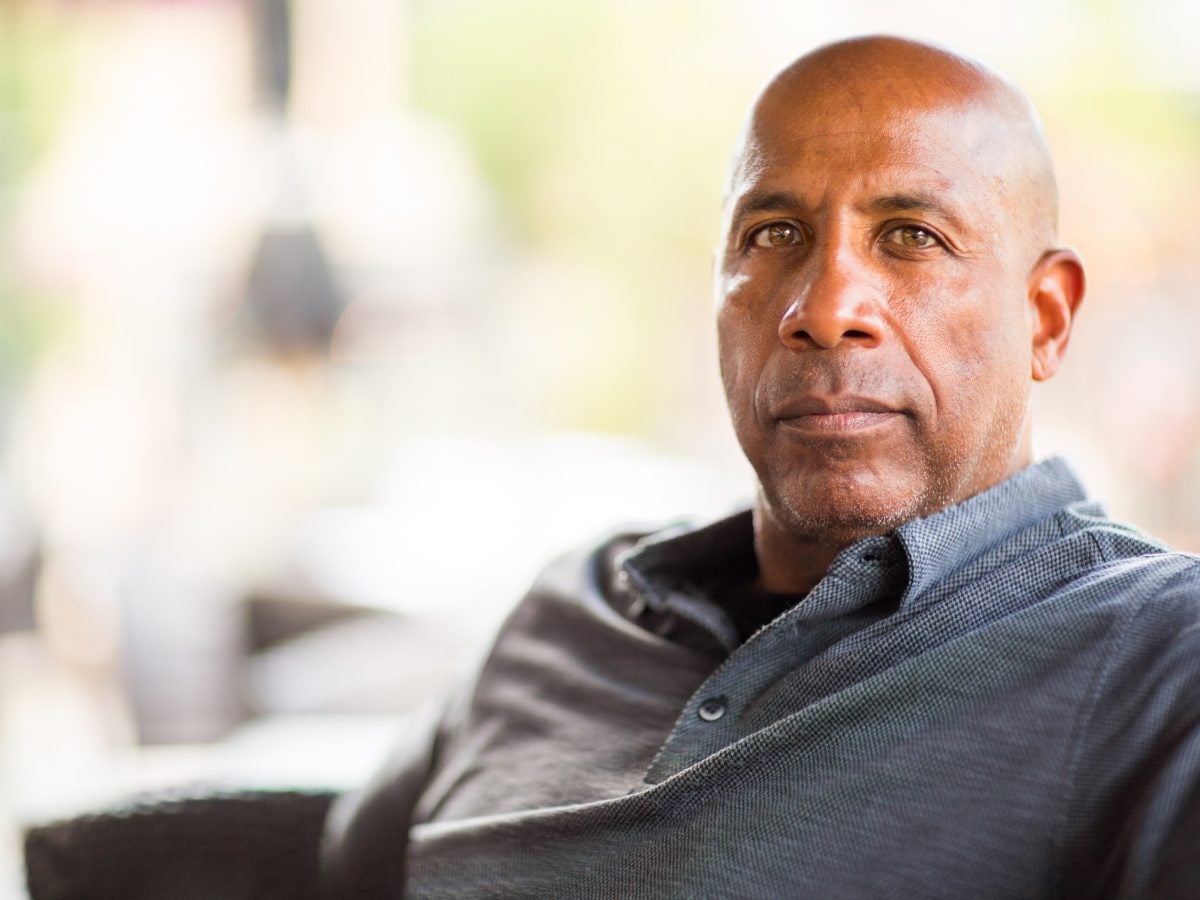
While attending and working the ESSENCE Festival of Culture this past summer in New Orleans, I had the opportunity to help with the very first Men’s Experience event. I moderated a conversation titled “F*CK Cancer!” and asked the audience, filled with both men and women, couples and families, how many of them had a man in their life who had battled with cancer. Many raised their hands. Too many in fact.
With that in mind, and September being prostate cancer awareness month, I wanted to speak with an expert or two on what the guys in our lives should know about the disease if they don’t already, and why it’s having such an immense impact on our community of men. That’s not an understatement. According to the CDC, Black men are more likely to not only be diagnosed with prostate cancer, but they’re also twice as likely to die from it than other men. If that weren’t enough, they tend to be diagnosed at more advanced stages, get it at a younger age and have more severe forms of the disease than other men.
So what’s that about? And what can be done about it? We consulted with two urologists who know a great deal about this form of cancer to get those answers: Amber Herbert, MD, a urology resident within the department of urology at Stanford University, and Christine Ibilibor, MD, M.Sc., assistant professor of the division of urologic oncology within the University of Virginia’s department of urology. See what they had to say and spread the word to your fathers, partners, brothers, friends — all of the men you care for this prostate cancer awareness month.
ESSENCE: Is it true that Black men have a higher risk for prostate cancer? If so, what has been connected to that?
Yes, Black men are more likely to be diagnosed with prostate cancer and are two times more likely to die from the disease in comparison to their White counterparts. There are multiple factors contributing to this racial disparity and we can broadly group them into genetic and socioeconomic factors.
Black men have a higher risk for developing prostate cancer if a first-degree relative like their brother or father had prostate cancer. This increases their risk by 2.5-fold. Also, prior research studies have found that pre-clinical or early stage prostate cancer in Black men is more likely to spread and develop into advanced cancer compared to the general population. This is thought to be, at least in part, due to potentially inherited cancer genes.
Limited access to health care due to social determinants of health is a cause for the racial disparities seen in prostate cancer. Income, education, and occupation are intimately associated with an individual’s health. Approximately 15% of Black adults are uninsured, and this restricts their access to prostate cancer screening. Often when they get access to care, they present with advanced disease (e.g., disease spread outside of the prostate). In some areas, there are limited healthcare providers, making access to care more challenging.
While some studies show that Black men within equal access healthcare systems such as the Veterans Affairs Health System have similar risk of death from prostate cancer to White men, other studies show that Black men are more likely to receive less effective treatment for their prostate cancer despite adequate healthcare access. This highlights the contribution of health system-related factors that significantly affect the long-term cancer outcomes in Black men.
I asked my husband when he was told that he should start to seek out prostate exams. He said he heard in his 50. Is that the correct time frame?
For men who are not Black/African American, who do not have a family history of prostate cancer, nor have any known inherited genetic abnormalities associated with prostate cancer, a general prostate cancer screening can begin between the ages of 55-69. However, for men with any of the above risk factors, prostate cancer screening generally begins between the ages of 40-54. Black men automatically fall within a higher risk group, so organizations such as the American Urologic Association and the National Comprehensive Cancer Network recommend having a discussion about prostate cancer screening at an early age for men at higher risk.
What are signs and symptoms men should be on the lookout for?
Unfortunately, prostate cancer in its early stages is often silent or asymptomatic. When it becomes more advanced, men can experience symptoms of dull pelvic pain, lower back pain, hematuria or blood in the urine, difficulty with urination, and unexplained weight loss.
Can you speak to PSA levels and what lifestyle changes men can put into place to keep PSA levels low?
PSA or Prostate Specific Antigen is the foundation of prostate cancer screening. PSA is a protein made by the prostate and screening involves a blood test that measures the PSA levels. Normally, the level of PSA is low. However, this level can be elevated in the setting of trauma, inflammation, infection, and prostate cancer.







There is limited data regarding primary lifestyle measures to prevent prostate cancer and keep PSA levels low. We have identified lifestyle measures to improve the prognosis of prostate cancer, but not prevent prostate cancer. Despite the limited information available, we have found aerobic exercise, eating a well-balanced diet (plant-based and low saturated fat), and smoking cessation can improve a patient’s prostate cancer outcomes.
For those who seem like they have no knowledge about screenings and aren’t taking it all that serious, what would you recommend we share with them?
Tell them one of the first things you can do is see your primary care provider and ask for more information regarding prostate cancer screening. If you do not have a PCP, then I urge you to talk to your friends and family to find a physician that you can trust. Develop a dialogue between you and your doctor to become more knowledgeable and confident. I would caution patients to be weary of information seen on social media websites, as it has a high amount of misinformation. Instead, I would encourage patients to use trusted websites like the Prostate Cancer Foundation and institutional based websites to learn more.






